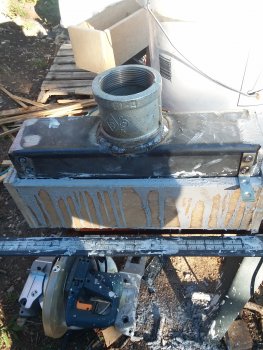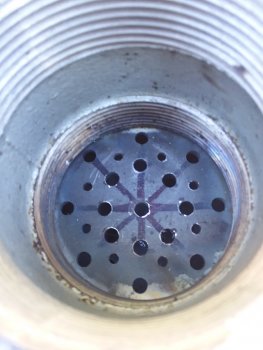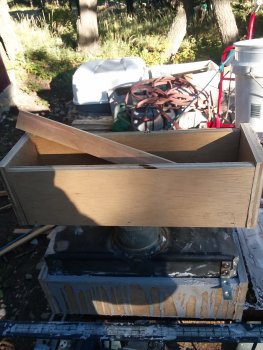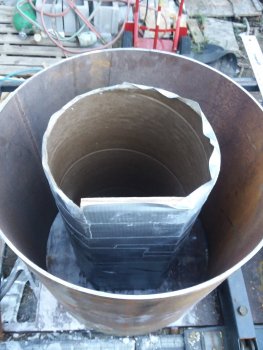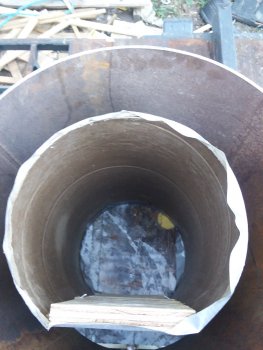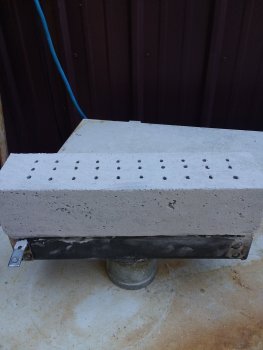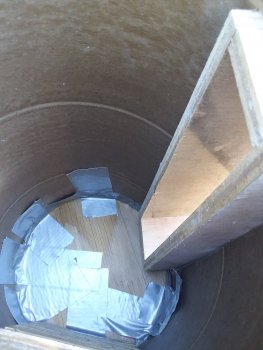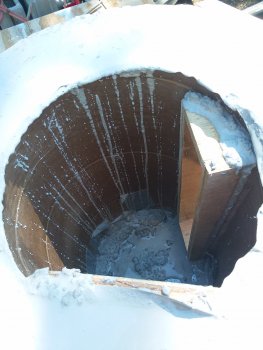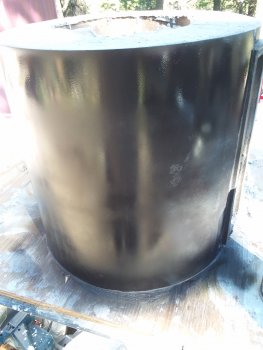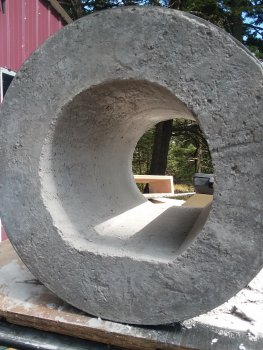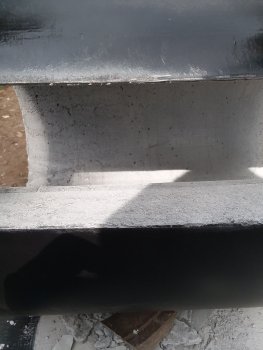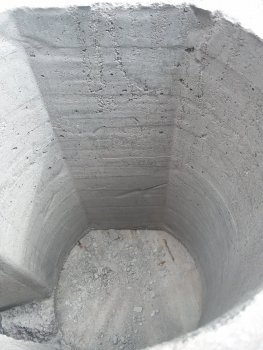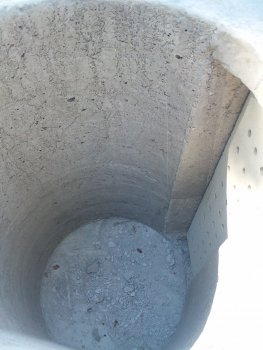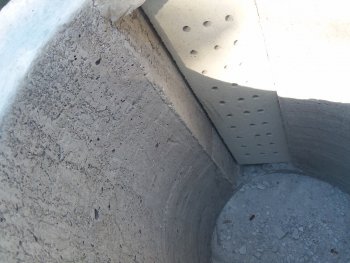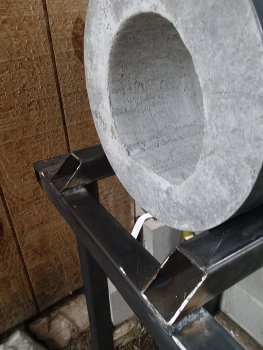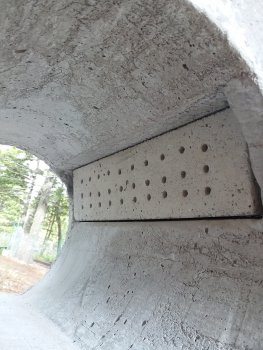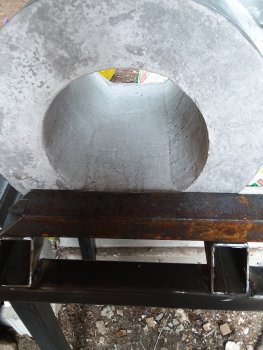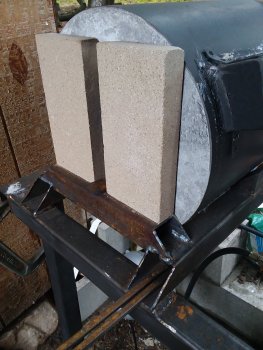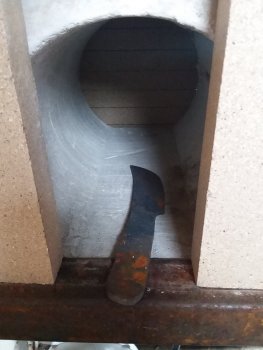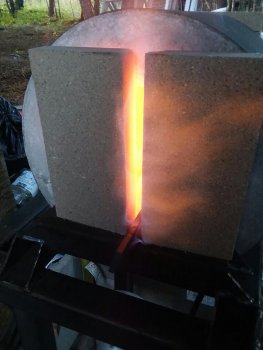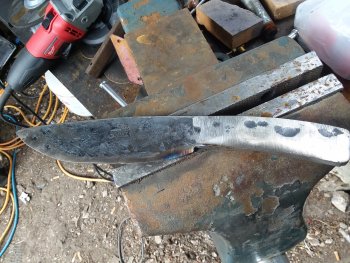Vombrown
Banned
So I have been planning this for a while and thought I might offer up some pictures and thoughts on what I did and why. This ribbon burner is based on all the others that are online. It's 12 X 3" with 3" of castable. So the first things first. I built one exactly as I have seen others built, no modifications. I used 1/4" straws for the gas chases in the castable. Nothing fancy, just simple.
Now the pictures below are the one that I modified slightly. First and formost it isn't square. The castable is actually wedge shaped. In the same opening for the 12x3 this one will not need to be suspended on the outside it should sit tight in the hole by 1/4". Making a better seal. OK next small change that I made is illustrated in the second pic. Instead of cutting out the 2" hole in the top of the square tubing, I layed out the diameter, drilled the hole in the top of the hole and dimpled it using my press with a 2" dimpling die. It's sort of hard to see but I think you get the drift. This lowers the "Plenum" area, gives it curvature and should more evenly mix the gas coming into the manifold portion of the burner. I will be curing these according to the manufacturer specs and test them independently to see if there is any difference. I doubt there will be, if very small. I can tell you my way took about 30 minutes less time and no hole saw to make. My new forge is also underway. Cutting Down the 14" diameter pipe that I will be using as the casing for the castable. Pics on that later.
Now the pictures below are the one that I modified slightly. First and formost it isn't square. The castable is actually wedge shaped. In the same opening for the 12x3 this one will not need to be suspended on the outside it should sit tight in the hole by 1/4". Making a better seal. OK next small change that I made is illustrated in the second pic. Instead of cutting out the 2" hole in the top of the square tubing, I layed out the diameter, drilled the hole in the top of the hole and dimpled it using my press with a 2" dimpling die. It's sort of hard to see but I think you get the drift. This lowers the "Plenum" area, gives it curvature and should more evenly mix the gas coming into the manifold portion of the burner. I will be curing these according to the manufacturer specs and test them independently to see if there is any difference. I doubt there will be, if very small. I can tell you my way took about 30 minutes less time and no hole saw to make. My new forge is also underway. Cutting Down the 14" diameter pipe that I will be using as the casing for the castable. Pics on that later.

